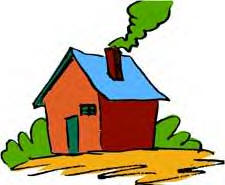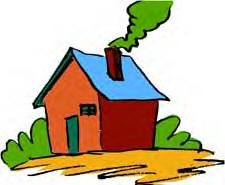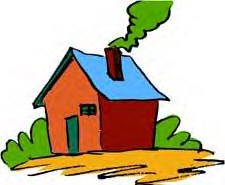Definition:
* Vomiting is the forceful emptying (throwing up) of a large portion of the stomach’s contents through the mouth
* Nausea and abdominal discomfort usually precede each bout of vomiting
* Vomiting and diarrhea together is covered by this topic
Causes:
* Main Cause: Stomach and intestinal infection (gastroenteritis) from a stomach virus (eg, rotavirus). The illness starts with vomiting but diarrhea usually follows within 12 to 24 hours.
* Food poisoning from toxins produced by bacteria growing in poorly refrigerated foods (eg, Staphylococcus toxin in egg salad, Bacillus cereus toxin in rice dishes).
Severity of Vomiting:
The following is an arbitrary attempt to classify vomiting by risk for dehydration:
* Mild: 1 to 2 times a day
* Moderate: 3 to 7 times a day
* Severe: Vomits everything or nearly everything, or 8 or more times a day
* Severity relates even more to the length of time that the particular severity level has persisted. At the beginning of a vomiting illness (especially following food poisoning), it’s common for a child to vomit everything for 3 or 4 hours and then become stable with mild or moderate vomiting.
* Watery stools in combination with vomiting carry the greatest risk for causing dehydration
* The younger the child, the greater the risk for dehydration
How to Recognize Dehydration:
* Dehydration means that the body has lost excessive fluids, usually from vomiting or diarrhea. An associated weight loss of more than 3% is required. In general, mild diarrhea, mild vomiting, or a mild decrease in fluid intake does not cause dehydration.
* Dehydration is the most important complication of diarrhea
* The following are signs of dehydration:
– Decreased urination (no urine in more than 8 hours) occurs early in the process of dehydration. So does a dark-yellow, concentrated yellow. If the urine is light straw colored, your child is not dehydrated.
– Dry tongue and inside of the mouth. Dry lips are not helpful.
– Dry eyes with decreased or absent tears
– In infants, a depressed or sunken soft spot
– Delayed capillary refill longer than 2 seconds. This refers to the return of a pink color to the thumbnail after you press it and make it pale. Ask your child’s doctor to teach you how to do this test.
– Irritable, tired out, or acting ill. If your child is alert, happy, and playful, he is not dehydrated.
– A child with severe dehydration becomes too weak to stand or very dizzy if he tries to stand.
Return to School: Your child can return to child care or school after vomiting and fever are gone
 Call 911 Now (Your Child May Need an Ambulance) If:
Call 911 Now (Your Child May Need an Ambulance) If:
* Unresponsive or difficult to awaken
* Not moving or too weak to stand
Call Your Doctor Now (in Alberta, Canada call 780-408-LINK) If:
* Your child looks or acts very sick
* Signs of dehydration (very dry mouth, no tears, and no urine in more than 8 hours)
* Blood in the stool
* Blood in the vomit that’s not from a nosebleed
* Bile (bright yellow or green) in the vomit
* Abdominal pain is also present (EXCEPTION: Abdominal pain or crying just before and improved by vomiting is quite common)
* Appendicitis suspected (eg, pain low on right side, won’t jump, prefers to lie still)
* Poisoning with a plant, medicine, or other chemical suspected
* Child is younger than 12 weeks with vomiting 2 or more times (EXCEPTION: spitting up)
* Child younger than 12 months who has vomited Pedialyte (or other brand of oral rehydration solution) 3 or more times and also has watery diarrhea
* Receiving Pedialyte (or clear fluids if older than 1 year) and vomits everything longer than 8 hours
* Weak immune system (eg, sickle cell disease, HIV, chemotherapy, organ transplant, chronic steroids)
* Vomiting an essential medicine
* Fever above 104°F (40°C) and not improved 2 hours after fever medicine
* Child is younger than 12 weeks with fever above 100.4°F (38.0°C) rectally (CAUTION: Do NOT give your baby any fever medicine before being seen)
Call Your Doctor Within 24 Hours (Between 9:00 am and 4:00 pm) If:
* You think your child needs to be seen
* Has vomited longer than 24 hours
* Fever present for more than 3 days
Call Your Doctor During Weekday Office Hours If:
* You have other questions or concerns
* Vomiting is a recurrent chronic problem
Parent Care at Home If:
* Mild to moderate vomiting with diarrhea (probably viral gastroenteritis) and you don’t think your child needs to be seen
 Home Care Advice for Vomiting with Diarrhea:
Home Care Advice for Vomiting with Diarrhea:
1. Reassurance:
* Most vomiting is caused by a viral infection of the stomach and intestines or by food poisoning
* Vomiting is the body’s way of protecting the lower intestinal tract
* When vomiting and diarrhea occur together, treat the vomiting. Don’t do anything special for the diarrhea
2. For Bottle-fed Infants, Offer Oral Rehydration Solution (ORS) for 8 Hours:
* ORS (eg, Pedialyte, store brand) is a special electrolyte solution that can prevent dehydration. It’s readily available in supermarkets and drugstores.
* For vomiting once, continue regular formula
* For vomiting more than once, offer ORS for 8 hours. If ORS is not available, use formula.
* Spoon or syringe feed small amounts of ORS —1 to 2 teaspoons (5 to 10 mL) every 5 minutes.
* After 4 hours without vomiting, double the amount
* After 8 hours without vomiting, return to regular formula
* For infants older than 4 months, also return to cereal and strained bananas
* Return to normal diet in 24 to 48 hours
3. For Breastfed Infants, Reduce the Amount Per Feeding:
* If infant vomits once, nurse 1 side every 1 to 2 hours
* If infant vomits more than once, nurse for 5 minutes every 30 to 60 minutes. After 4 hours without vomiting, return to regular breastfeeding.
* If infant continues to vomit, switch to ORS (eg, Pedialyte) for 4 hours
* Spoon or syringe feed small amounts of ORS —1 to 2 teaspoons (5 to 10 mL) every 5 minutes.
* After 4 hours without vomiting, return to regular breastfeeding. Start with small feedings of 5 minutes every 30 minutes and increase as tolerated.
4. For Older Children (Older Than 1 Year), Offer Small Amounts of Clear Fluids for 8 Hours:
* ORS: Vomiting with watery diarrhea needs ORS (eg, Pedialyte). If child refuses ORS, use half-strength Gatorade.
* Give small amounts—2 to 3 teaspoons (10 to 15 mL) every 5 minutes
* After 4 hours without vomiting, increase the amount
* After 8 hours without vomiting, return to regular fluids
* Solids: After 8 hours without vomiting, add solids
– Limit solids to bland foods. Starchy foods are easiest to digest
– Start with saltine crackers, white bread, cereals, rice, and mashed potatoes
– Return to normal diet in 24 to 48 hours.
5. Avoid Medicines:
* Discontinue all nonessential medicines for 8 hours (Reason: usually make vomiting worse)
* Fever: Fevers usually don’t need any medicine. For higher fevers, consider acetaminophen (eg, Tylenol) suppositories. Never give oral ibuprofen (eg, Advil); it is a stomach irritant
* Call your doctor if your child is vomiting an essential medicine
6. Contagiousness: Your child can return to child care or school after vomiting and fever are gone.
7. Expected Course: Moderate vomiting usually stops in 12 to 24 hours. Mild vomiting (1 to 2 times a day) with diarrhea can continue intermittently for up to a week.
8. Call Your Doctor If:
* Vomiting becomes severe (vomits everything) longer than 8 hours
* Vomiting persists longer than 24 hours
* Signs of dehydration
* Diarrhea becomes severe
* Your child becomes worse
Based on recommendations/advice in “My Child is Sick; Expert Advice for Managing Common Illnesses and Injuries”, 14th Edition, by Barton D. Schmitt







